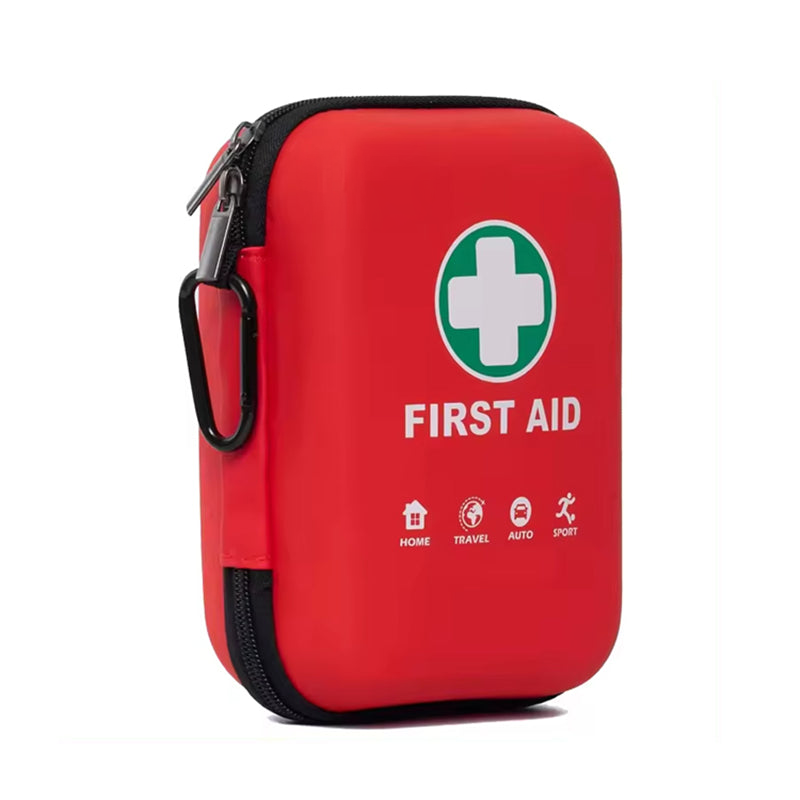Psychological First Aid in Car Emergency Kits

Introduction: The Psychological Impact of Car Accidents and How the Car Emergency Kit Can Help Alleviate Stress
Car accidents are often sudden disasters, yet their effects can linger for a long time. Besides physical injuries, psychological trauma is equally significant.
Whether it’s the victims or witnesses, car accidents can trigger intense fear, anxiety, and even prolonged depression, with some individuals developing Post-Traumatic Stress Disorder (PTSD).
If not addressed in a timely manner, these psychological responses can not only affect a person’s emotional state in the moment but can also have lasting negative impacts on their daily life.
Therefore, alongside traditional physical first aid, psychological first aid is essential at the accident scene.
Typically, car emergency kits are designed to handle physical injuries or sudden illnesses.
However, adding elements for psychological first aid would allow for a more comprehensive response to the trauma caused by a car accident.
This article explores the psychological effects of car accidents and discusses how psychological first aid items and techniques in a car emergency kit can help relieve stress and help individuals regain composure in the chaos and fear that follow an accident.
Psychological First Aid Items: Calming Toys, Counseling Tools, Emergency Guides, and More
A well-designed car emergency kit should not only contain traditional first aid supplies like bandages and antiseptics, but also items that can quickly alleviate psychological stress.
Below are some thoughtfully considered psychological first aid items that are simple, practical, and can play a crucial role in emergencies:
1. Calming Toys
- Recommended Items: Stress balls, fidget spinners, squishy toys
- Effect: These small, portable objects can help distract a person during a moment of high tension. Simple actions like squeezing a stress ball can stimulate tactile nerves and reduce anxiety. Repetitive movements, like twisting a fidget spinner, can help calm the brain and ease emotional distress.
2. Counseling Tools
- Recommended Items: Emotion management cards, psychological first aid manuals
- Effect: Emotion management cards can offer quick self-regulation tips such as “take three deep breaths” or “you are safe, help is on the way.” Psychological first aid manuals provide more detailed guidance on recognizing signs of emotional distress and how to manage those emotions step by step. These tools help non-professional caregivers provide immediate support.
3. Emergency Guides
- Recommended Items: Car accident psychological first aid booklet
- Effect: This booklet can include brief instructions such as "how to talk to the injured" and "how to call for psychological help." It serves not only for self-regulation but also helps bystanders assist the victim. The guide can also list national psychological support hotlines to ensure immediate access to professional help.
4. Communication Devices
- Recommended Items: Spare phone, emergency calling device
- Effect: Victims may lose access to their phones or encounter signal problems after an accident. A spare communication device can enable them to contact family, friends, or psychological counselors to receive emotional support. This “connection” can significantly reduce feelings of isolation and helplessness.
5. Comfort Items
- Recommended Items: Lightweight blanket, small pillow
- Effect: Physical comfort can translate into psychological relief. A soft blanket can provide warmth and a sense of being “protected,” which helps ease stress. A small pillow can offer physical support, alleviating mental stress caused by body fatigue.
6. Music Player
- Recommended Items: Portable MP3 player (pre-loaded with soothing music)
- Effect: Research has shown that gentle music can reduce heart rate and cortisol (the stress hormone) levels. A player pre-loaded with calming sounds (such as water flowing or birds singing) or soft music can act as a “secret weapon” in a car emergency kit, helping victims relax while waiting for help.
7. Pen and Paper
- Recommended Items: Small notebook and pen
- Effect: Writing can be an effective way to release psychological tension. The victim can write down their feelings or draw simple sketches to organize their thoughts, alleviating emotional confusion. This method is especially helpful for those who find it hard to express themselves verbally.
These items do not require much space but can provide immediate psychological support, becoming an essential complement to traditional first aid.
Psychological First Aid Techniques: How to Comfort Victims and Reduce Post-Accident Trauma
Psychological first aid items are important, but when combined with the right techniques, they can make a greater impact. At the scene of an accident, the responder (who could be a companion or bystander) can use the following methods to comfort the victim and reduce the long-term psychological effects of the incident:
1. Stay Calm
- Method: Take a deep breath and speak in a calm, steady tone
- Effect: The responder’s emotional state is contagious. If the responder panics, the victim will feel even more helpless. Staying calm not only helps the responder think clearly but also calms the victim, helping them relax.
2. Listen and Comfort
- Method: Listen attentively to the victim’s story and say comforting words such as “You’re not alone, I’m here with you.”
- Effect: Listening is the core of psychological first aid. The victim may need to retell the event repeatedly to process their fear, and simple comforting words will make them feel understood and supported.
3. Provide Information
- Method: Reassure the victim with statements like “Help is on the way” or “Your injury is being treated.”
- Effect: Uncertainty is a major source of anxiety. Providing accurate, simple information can help the victim regain a sense of control over the situation.
4. Encourage Deep Breathing
- Method: Guide the victim to “breathe in slowly for four seconds, then breathe out slowly.”
- Effect: Deep breathing activates the parasympathetic nervous system, which lowers heart rate and blood pressure, helping the victim calm down physiologically. This technique is simple yet highly effective.
5. Redirect Attention
- Method: Engage the victim in light conversation or offer them a calming toy
- Effect: Shifting the victim’s focus from the accident to other things can help break the cycle of fear. For instance, asking “What’s your favorite movie?” or giving them a stress ball can serve as a distraction.
6. Offer Physical Comfort
- Method: Gently pat the victim on the shoulder or hold their hand (with their consent)
- Effect: Appropriate physical contact can convey warmth and a sense of security, which is especially reassuring for someone in a state of shock or fear.
7. Encourage Emotional Expression
- Method: Say, “It’s okay to cry or shout if you need to.”
- Effect: Suppressing emotions can lead to more severe psychological issues. Encouraging the victim to express their emotions can help them release tension and recover more quickly.
8. Provide Hope
- Method: Say things like “You’re strong, we’ll get through this together.”
- Effect: Hope is the foundation of psychological recovery. Positive, encouraging words, even in uncertain situations, can inspire the victim’s will to persevere.
9. Seek Professional Help
- Method: Contact a psychological support hotline or professional rescue personnel
- Effect: If the victim shows severe emotional responses (such as continuous crying or inability to communicate), it’s essential to involve a professional to prevent further deterioration.
These techniques do not require any specialized training but can provide immediate psychological support when delivered with care.
Conclusion: Car Emergency Kits Should Not Only Address Physical Injuries, But Also Relieve Psychological Stress, Helping Victims Regain Calm
Car emergency kits should not be viewed merely as tools for treating physical injuries but should serve as comprehensive "lifelines" for dealing with the full range of trauma caused by a car accident.
The trauma of an accident involves both physical and psychological challenges, and timely psychological first aid can significantly reduce stress and help victims find peace amidst the chaos.
By equipping a car emergency kit with psychological first aid items like calming toys, counseling tools, and emergency guides, it can provide immediate support in emergencies.
Coupled with psychological first aid techniques like active listening, offering reassurance, and guiding deep breathing, responders can become a vital emotional support for victims.
Together, these items and techniques create a complete system for psychological first aid after a car accident.
In our everyday lives, we often focus too much on physical wounds and neglect the inner scars.
A well-rounded car emergency kit can not only stop bleeding but also soothe the soul. It reminds us that true rescue is not just about saving lives—it’s about healing hearts.
